Planet Scenes March 2025
|
|
|
|
March 29: Eclipse! A partial solar eclipse will be visible from the northeastern USA and Canada on this morning. It will peak around sunrise, so the photographic opportunities are epic! Ocean, lighthouses, boats, islands, you name it, provided the weather cooperates, there should be some great images to document the event. These three animations show the eclipse as it would appear if it were (1) high in the sky at noon if the sky was dark, (2) the rising Sun and Moon in a dark sky to highlight the Moon's size, constellation boundaries and stars, and (3) the eclipsed Sun rising over the ocean. |
|||
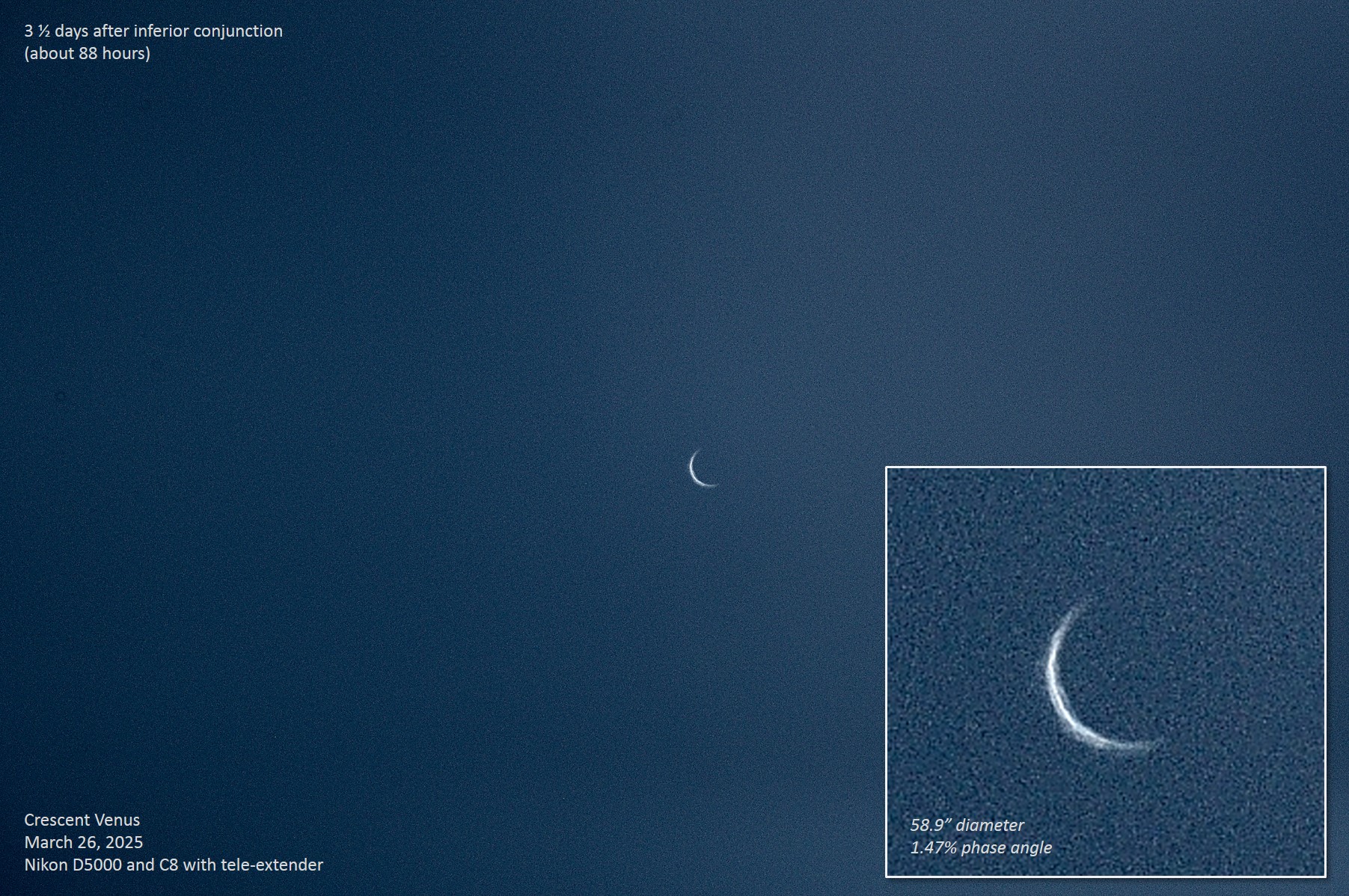
|
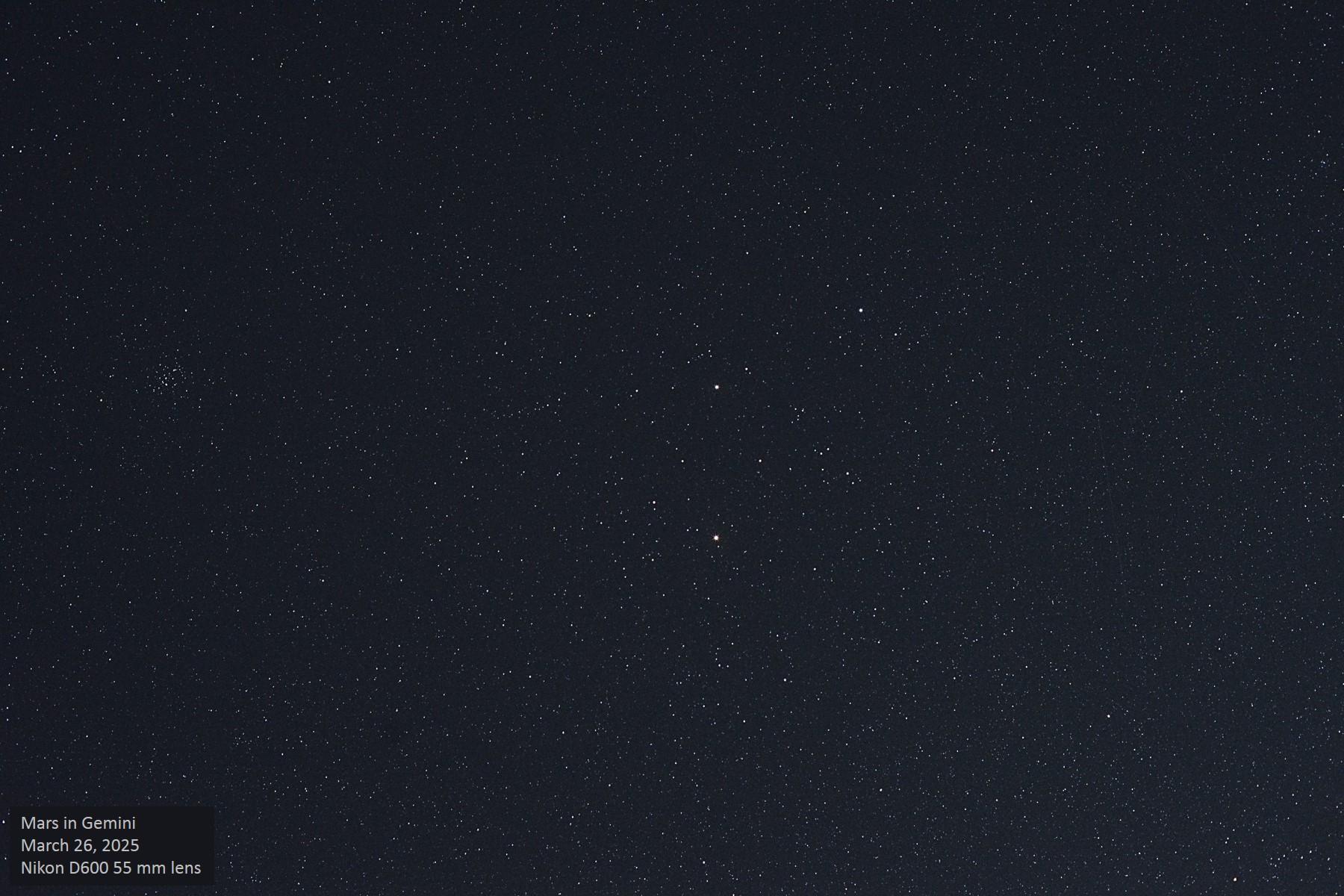
|

|
March 26: Venus in Daytime & Evening Planets This picture was taken around 1:00 p.m. EDT, which is 88 hours (a little more than 3½ days) after inferior conjunction. My setup was a Nikon D5000 coupled to a Celestron C8 with a tele-extender, exposure 1/2000". The day was beautifully clear and the skies very transparent. In the evening, I checked in on Jupiter and Mars to see how they are doing now that they are well past opposition and seriously beginning prograde motion again. |
|||
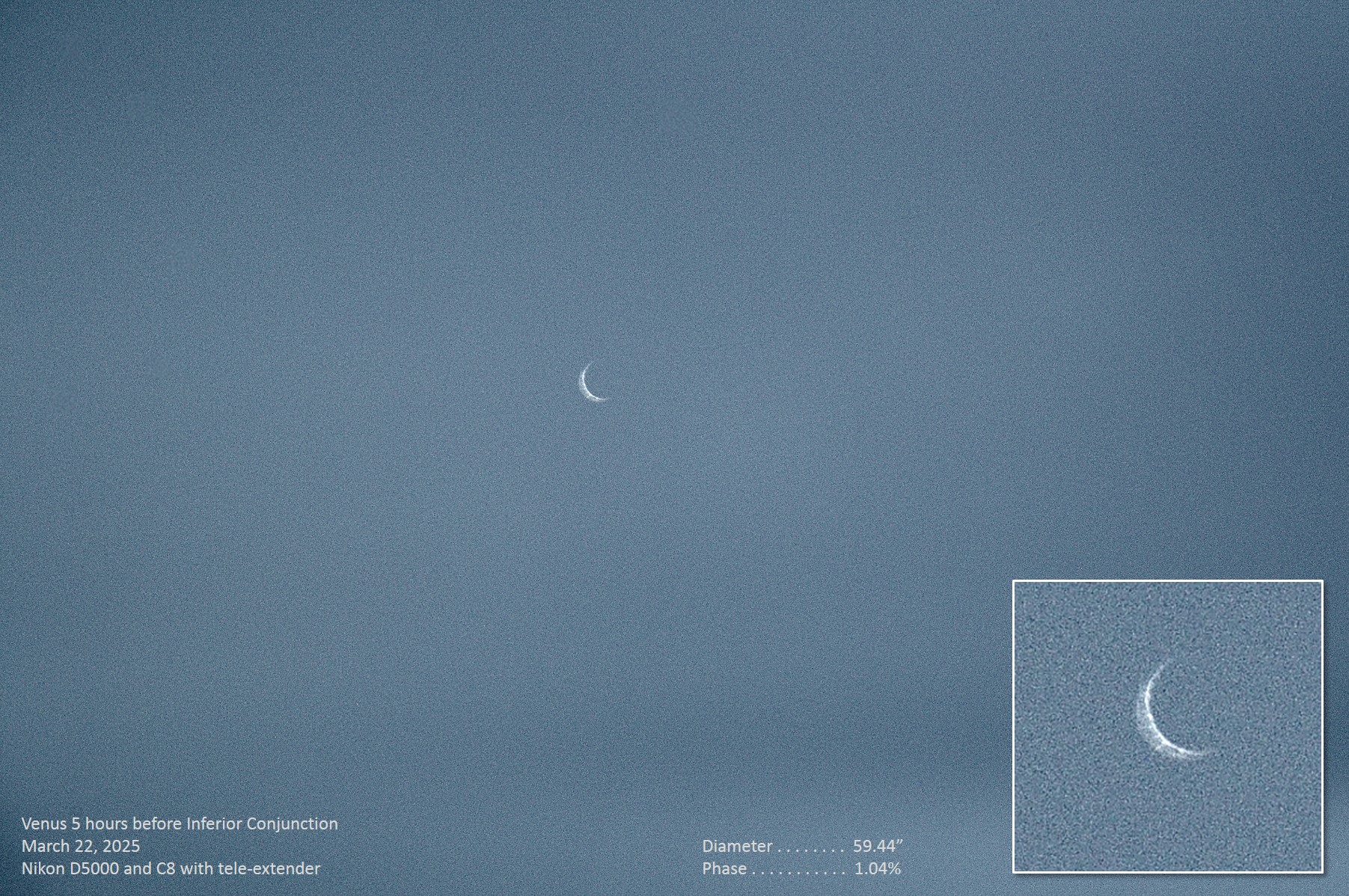
|
March 22: Venus in Daytime This picture was taken around 4:00 p.m. EDT, which is about 5 hours prior to the moment of Venus' inferior conjunction. My setup was a Nikon D5000 coupled to a Celestron C8 with a tele-extender, exposure 1/3200". Unfortunately, I don't have the skills to stack the static images I took. Spaceweather always has great images, with a few specific examples being from Kevin Whitman, Wah Wah, Maximilian Teodorescu, and Douglas Kostyk from Ionia, New York. |
|||||
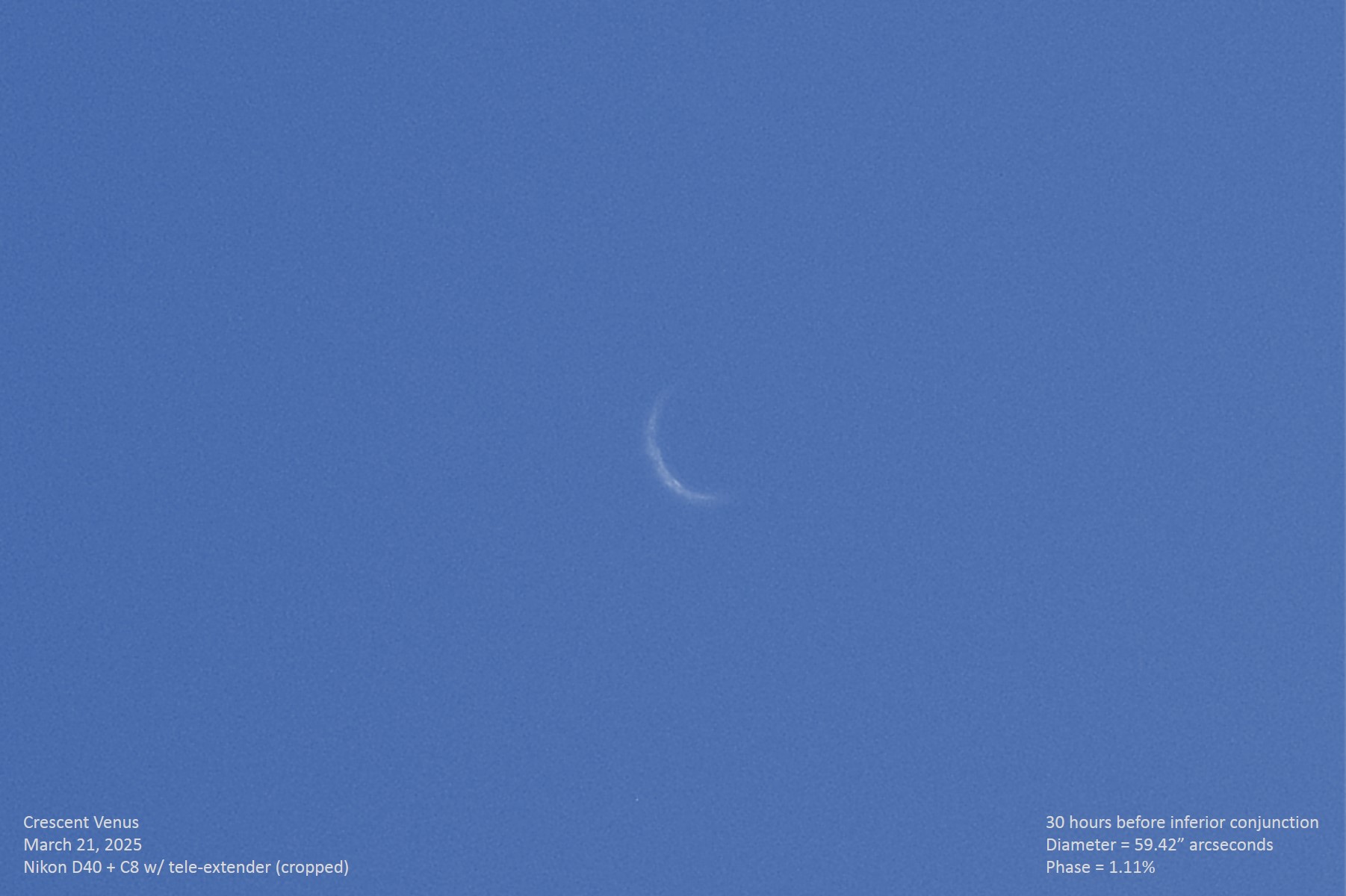
|
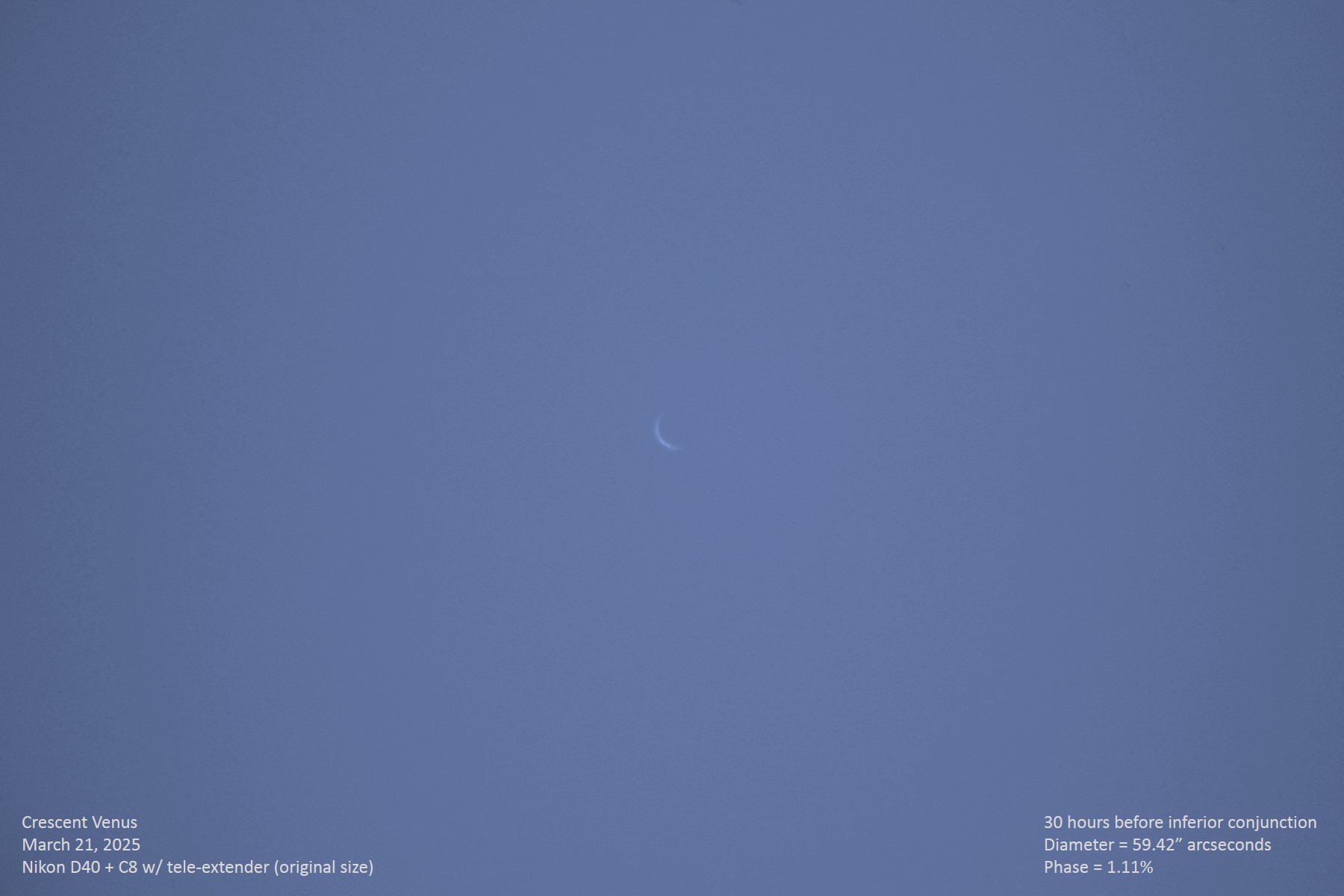
|
March 21: Venus in Daytime At the time of these images, Venus was about 30 hours before passing through inferior conjunction, which is going to occur about 9:00 EDT on March 22. These images were obtained with a Nikon D40 coupled to a C8 with tele-extender using exposures of either 1/3200 seconds or 1/4000 seconds. |
||||
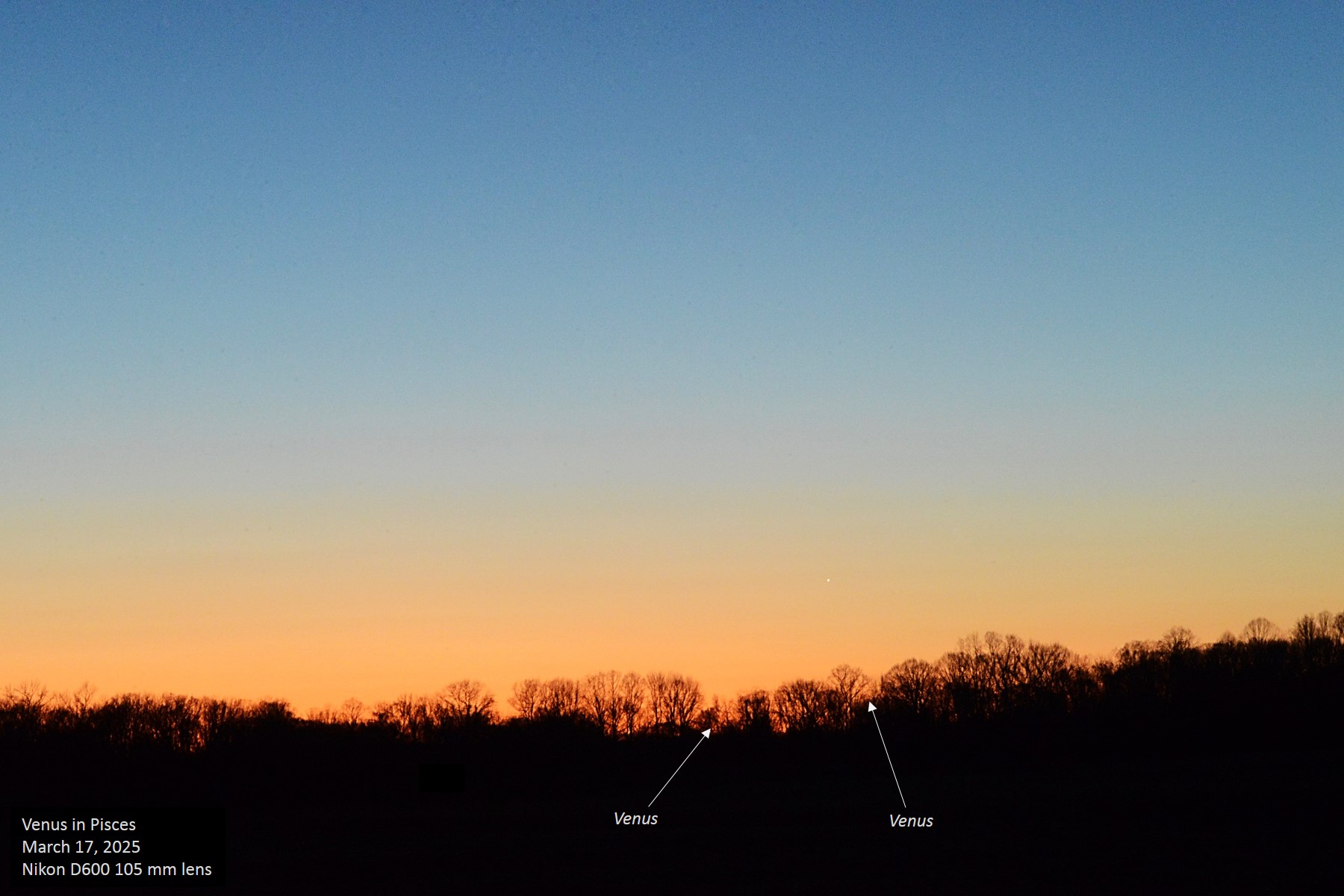
|
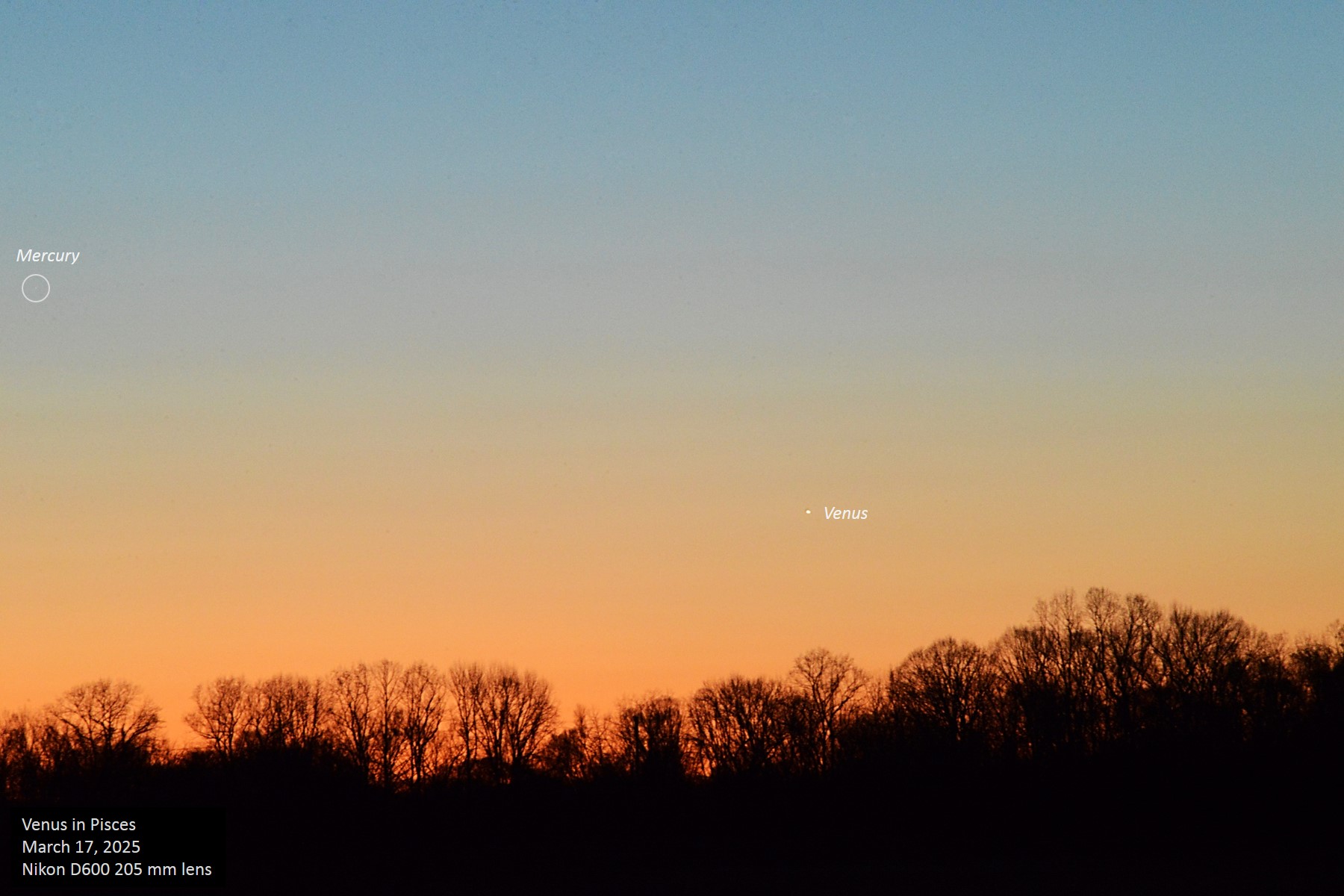
|

|
March 17: Venus in Evening Venus has sunk very low in the west after sunset, and now only has five days before passing through inferior conjunction, after which it will become prominent in the morning sky. Our views are through a zoom lens set to 105 mm, then to 230 mm, and finally a prime lens of 500 mm focal length. On the original 230 mm shot, you can barely see Mercury, which I have indicated with the circle. The 500 mm lens actually recorded the crescent form that Venus has right now. |
|||
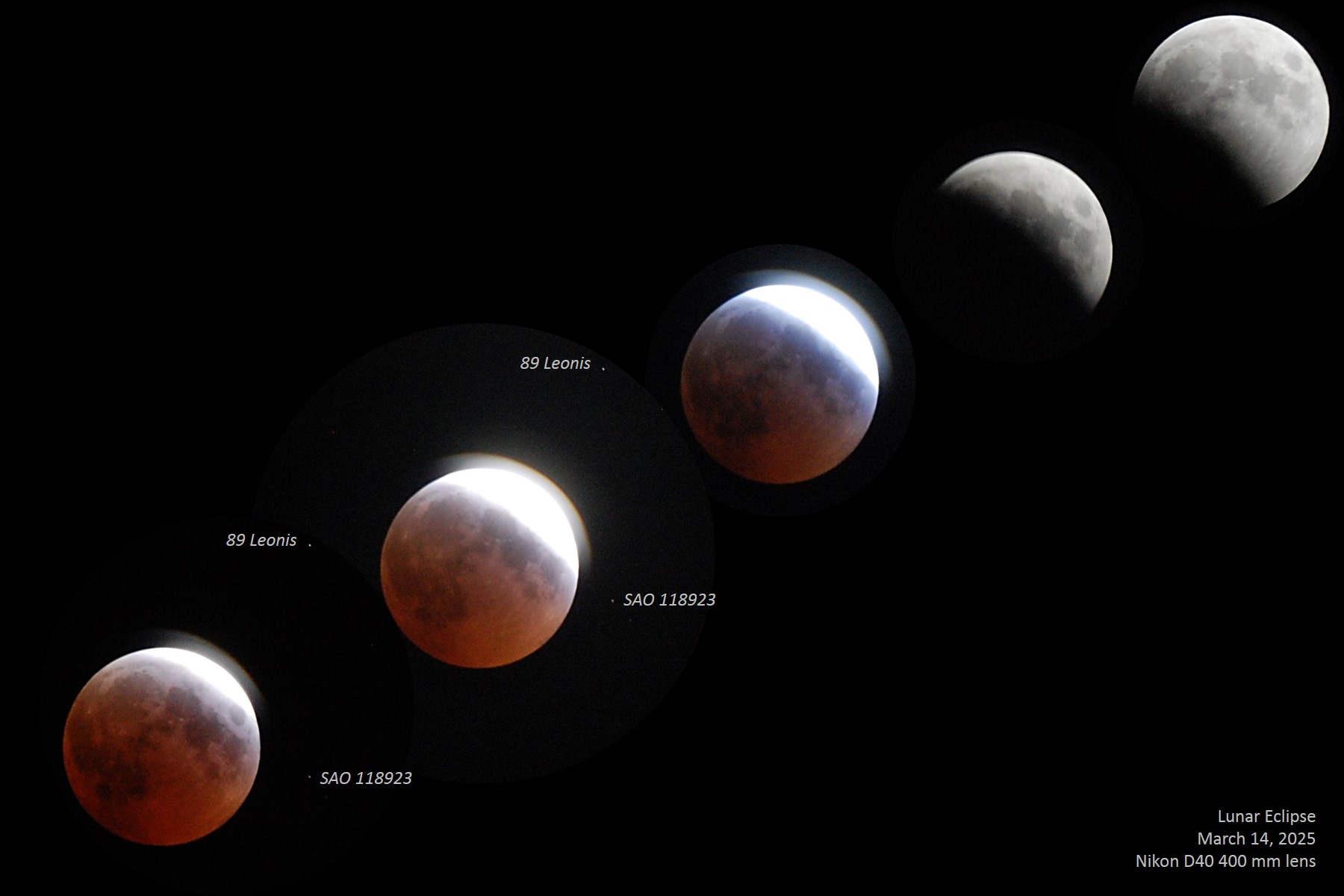
|

|
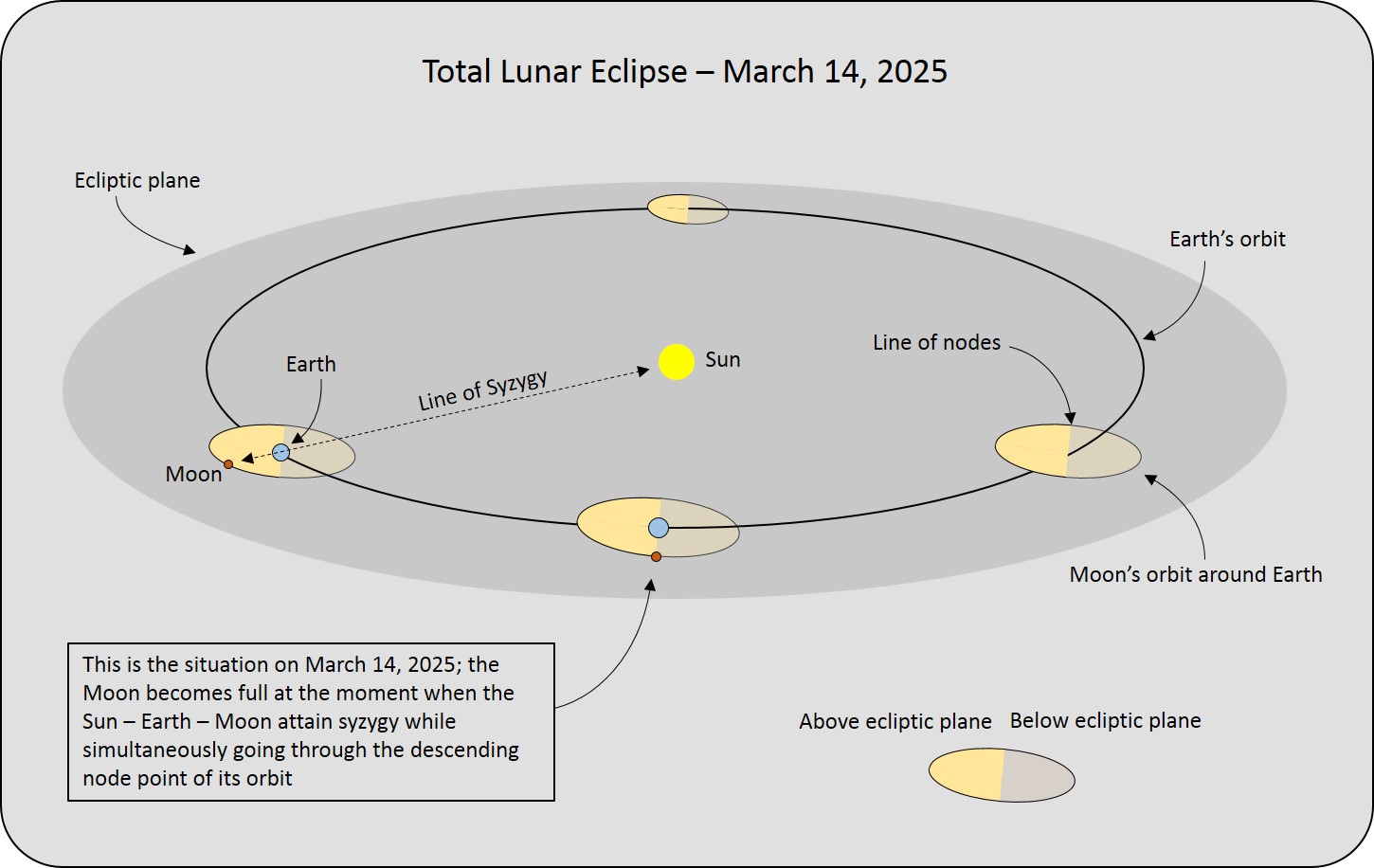
|
March 14: Lunar Eclipse Our view of the first phase of the lunar eclipse here in central Virginia was better than expected, given that our forecast several days in advance was for mostly cloudy skies. So as these images attest, we could see most of the first half, up until almost the start of totality. Unfortunately, after that clouds rolled in and we saw nothing else of the event. The second image was cropped and enlarged from the bottom left image of my montage sequence. |
|||
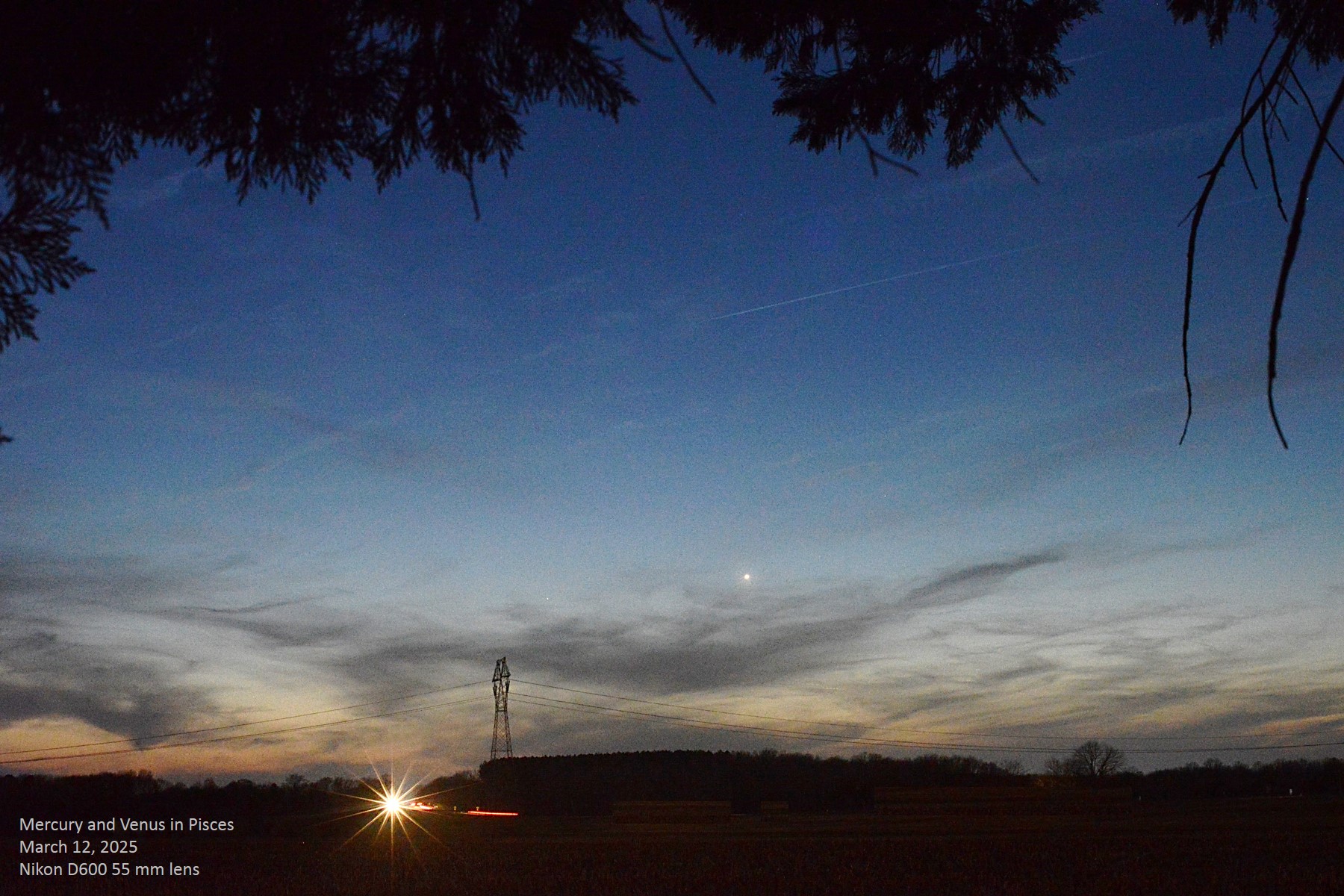
|
March 12: Venus and Mercury Again Mercury and Venus almost set at the same time this evening because Venus is speeding downward toward inferior conjunction, while Mercury is still moving slightly eastward against the stars, although slowly enough now (as it approaches its stationary point before beginning retrograde motion) that it is sinking lower each day. |
|||||
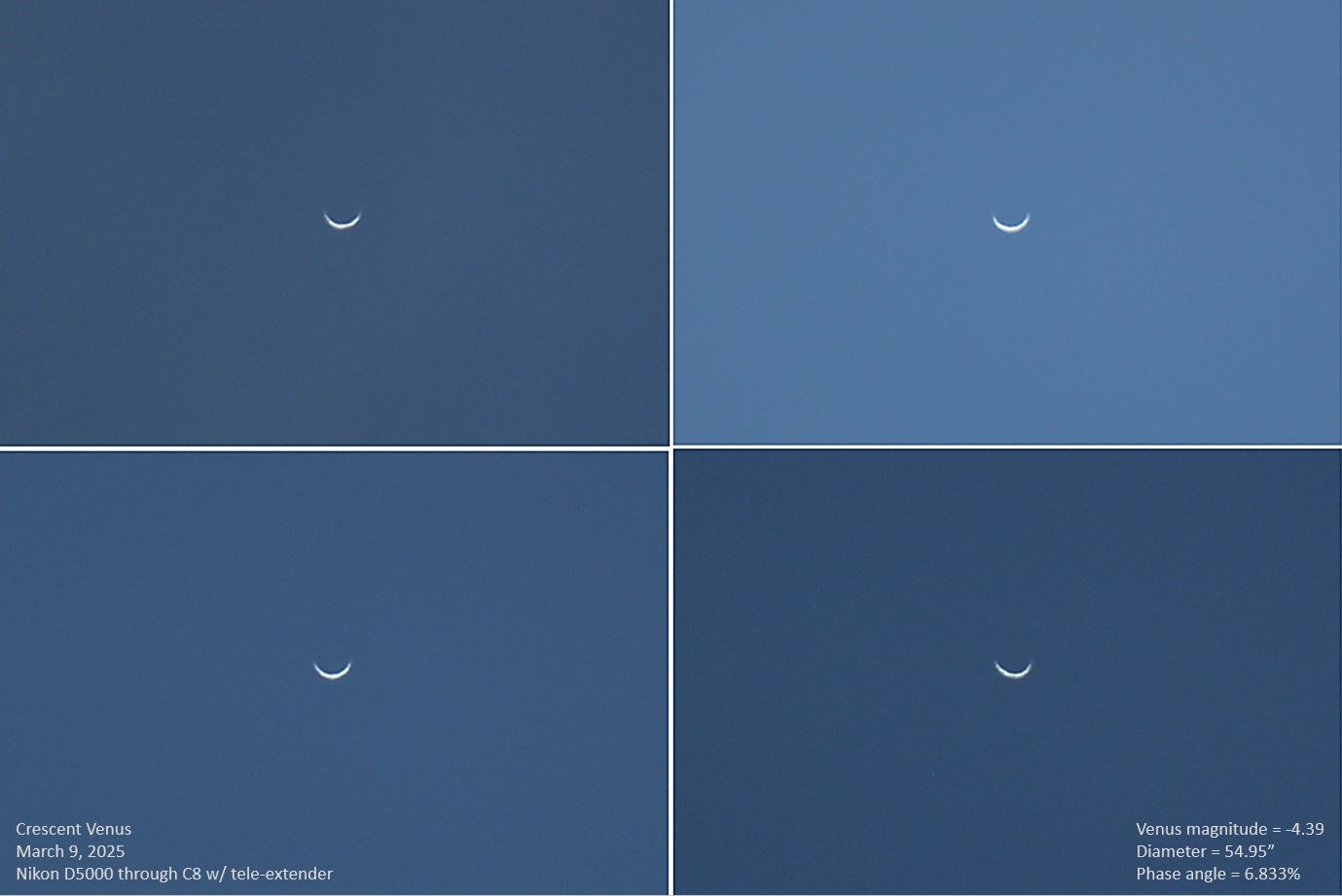
|
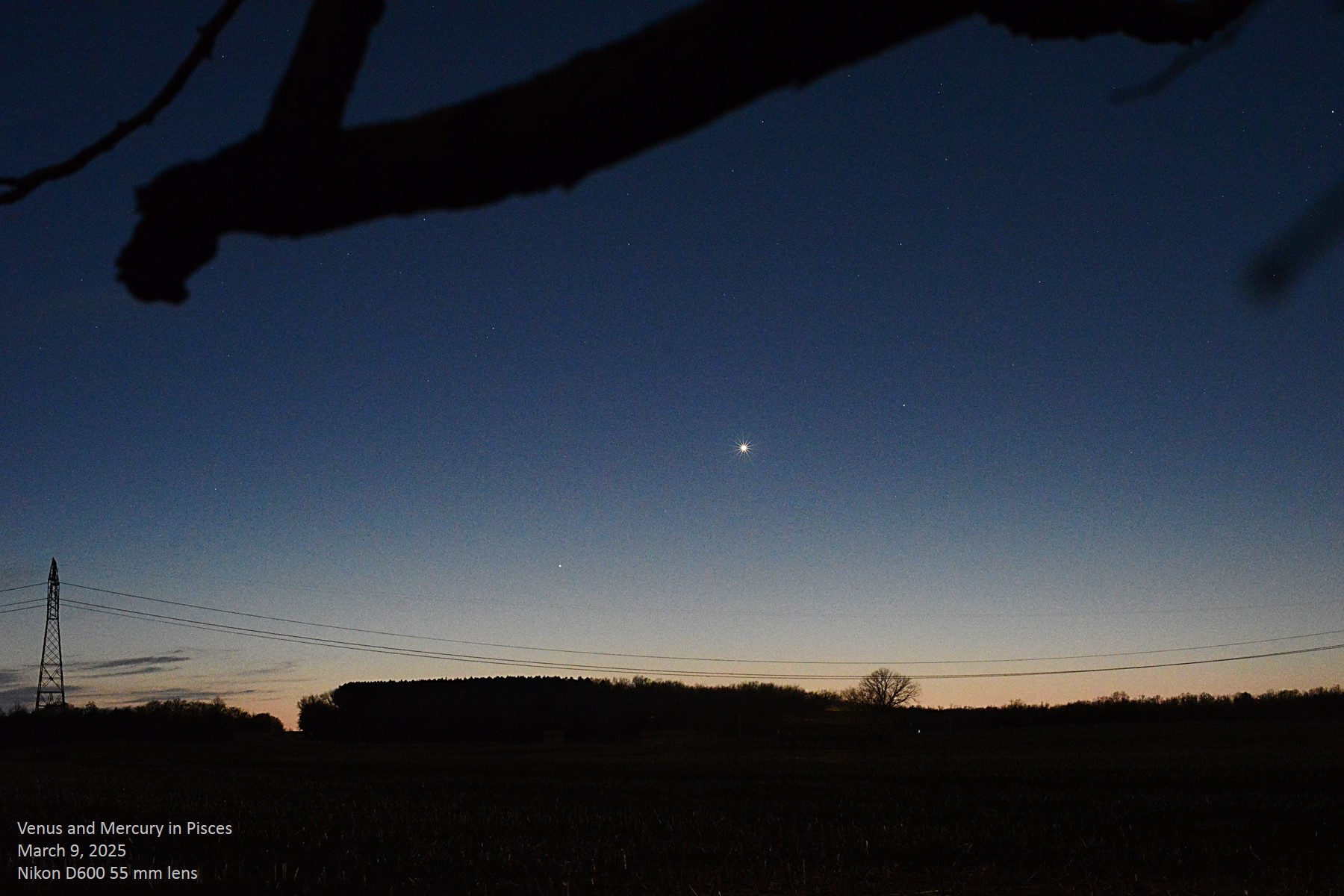
|
March 9: Venus in Telescope I tried something different this afternoon ~ I recently acquired a free Celestron tele-extender and decided to try imaging Venus using it. The setup was my Nikon D5000 (crop-sensor camera) and my Celestron C8 with the tele-extender. I don't know what the magnification equates to but I was a little surprised that Venus was still pretty small in the viewfinder. These are the four best snapshots I got. Once dusk fell, we see how the gap between Mercury and Venus is slowly narrowing and the line connecting them becomes more horizontal. |
||||
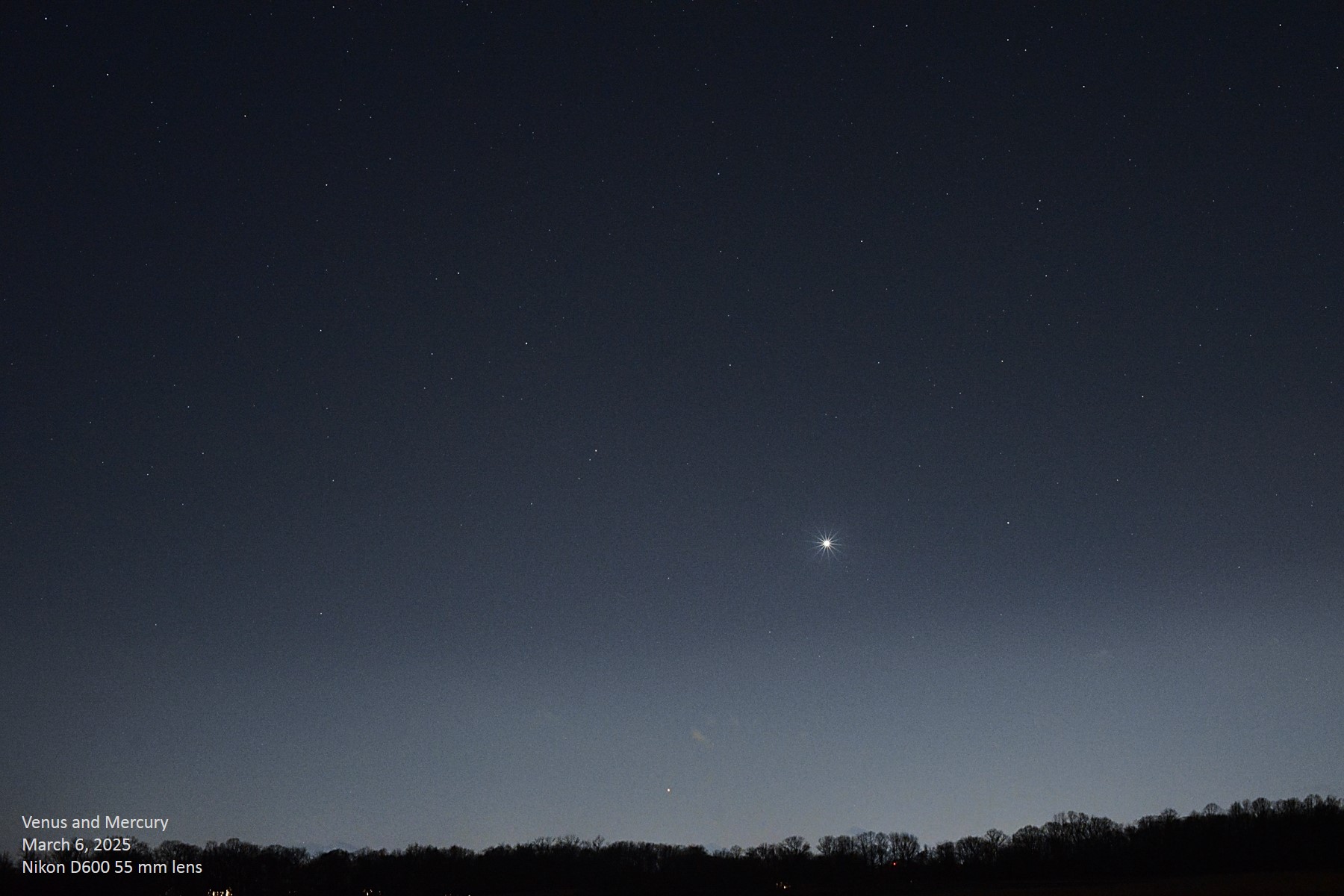
|
March 6: Venus & Mercury Venus swinging widely north of Mercury as both are heading for a near simultaneous inferior conjunction. |
|||||
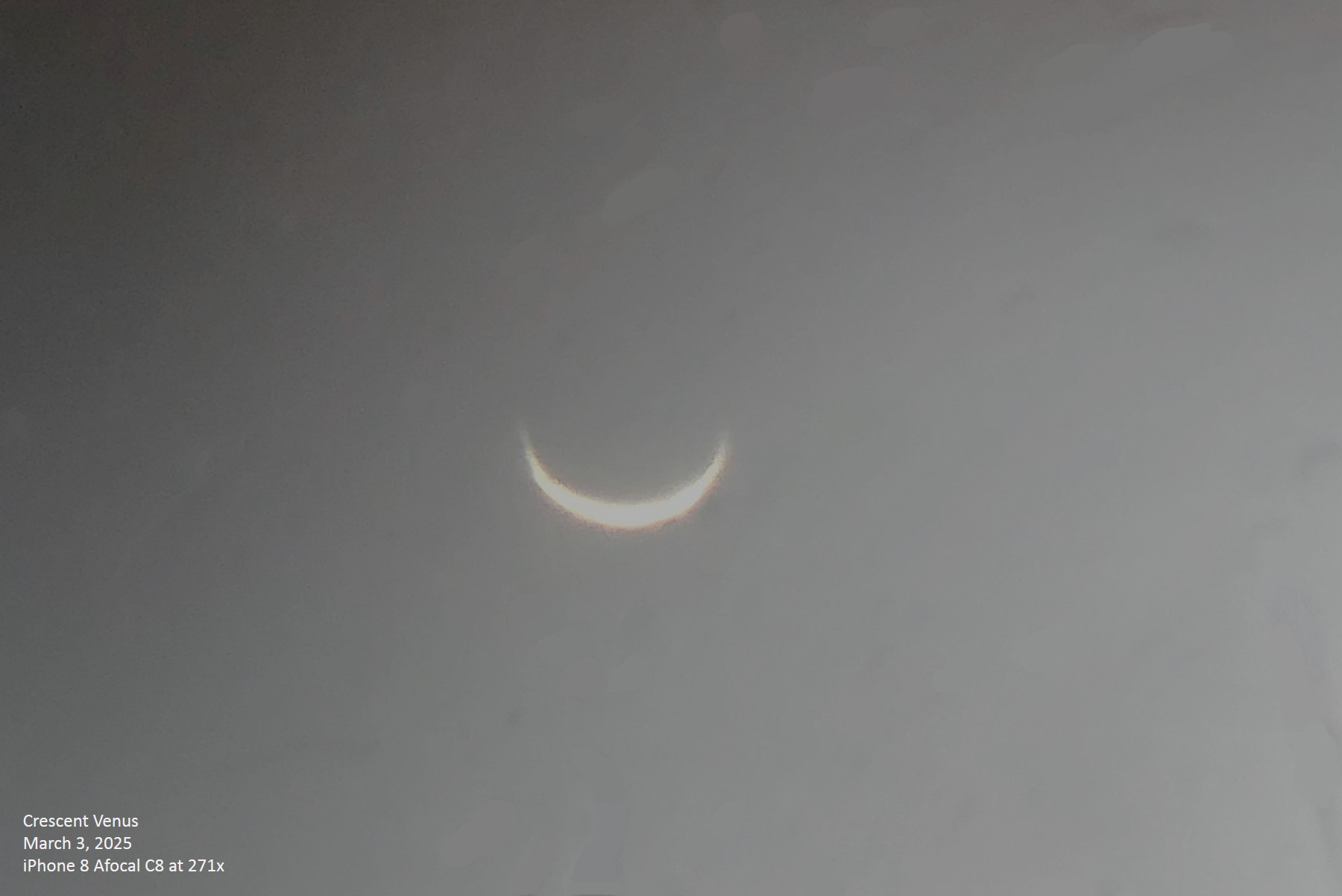
|
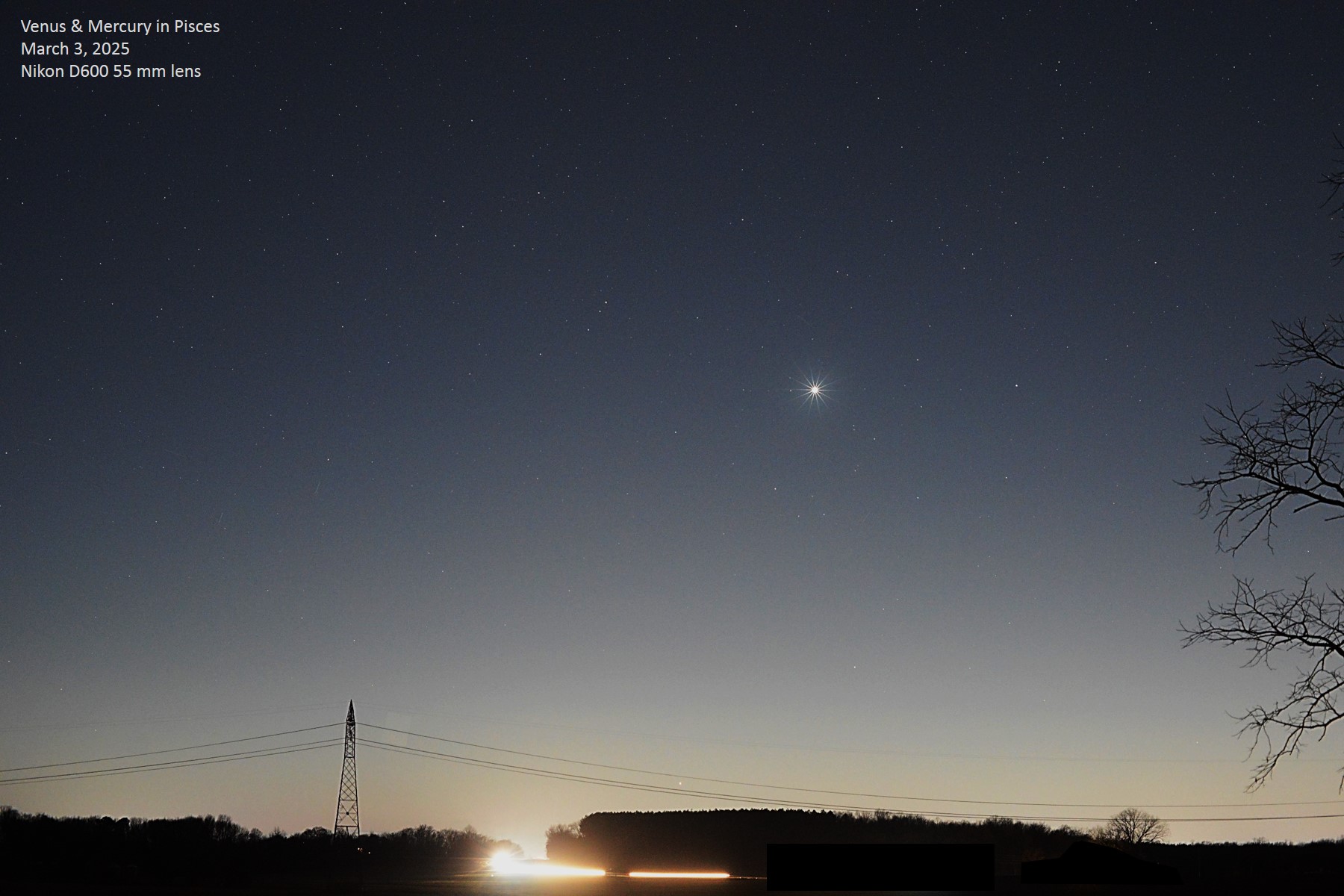
|
March 3: Venus in Celestron C8 Venus is now over 50" in diameter, and about 28° from the Sun this afternoon. For this shot, I used a 7.5 mm plössl in my C8 for a magnification of 271x, took a snapshot with my iPhone 8, and then cropped, enlarged, and cleaned up the background blemishes. Later in the evening, I got another shot of Venus and Mercury, and unfortunately also lots of car headlights. |
||||
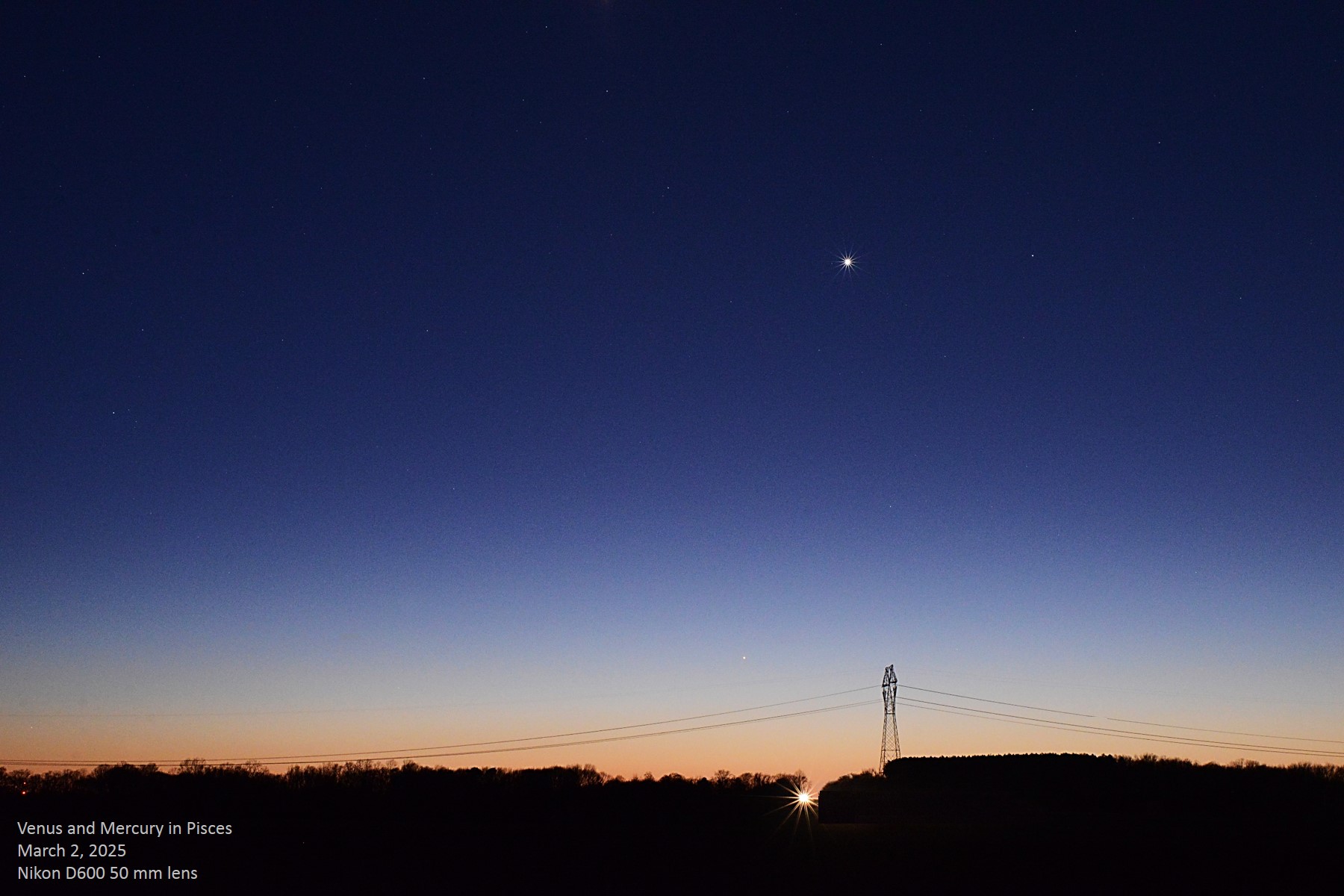
|
March 2: Venus and Mercury Venus and Mercury are closing in on each other in the evening, and as a result of Mercury's climb, it is now easily visible in an almost totally dark sky at the end of twilight. Mercury is still moving rapidly up the ecliptic while at the same time, Venus is rapidly descending now. |
|||||